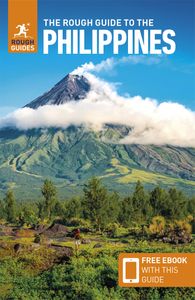The Clam Sanctuary
The family-run Cantaan Kaliba Giant Clam Sanctuary is home to about three thousand clams. The entry includes a short tour of the rehabilitation tanks, and grants you access to one of the island’s most beautiful stretches of white-sand beach, as well as a coral reef that’s good for snorkelling. Though the entry fee is reasonable, the extra charges for snorkelling are overpriced.
Bura Soda Water Park
Bura Soda Water Park is known for its unique soda springs, which have a large amount of carbon dioxide and minerals that give the water a soda-like texture and mildly salty taste. This nature park is located in the town of Catarman, on the northern coast of the island. The park invites visitors to take a dip in the soda pools, which are believed to have therapeutic effects and provide relief from muscular pain.
Where to stay on Camiguin Island?
Most of the seaside accommodation in Camiguin Island is west of Mambajao on the beaches between the small towns of Bug-ong and Naasag. Resorts near the town of Agoho, a little west of Bug-ong, remain popular due to their easy access to White Island. East of Mambajao, around the village of Balgabon, you’ll find more resorts, although the beach here isn’t as good as at Agoho, Yumbing or Naasag.
Find more accommodation options to stay on Camiguin Island
Looking for some more exotic destinations for your trip? Explore our guide to the most exotic places to travel in the world.
Ready for a trip to the Philippines? Check out the snapshot of The Rough Guide to the Philippines.
If you prefer to plan and book your trip to the Philippines without any effort and hassle, use the expertise of our local travel experts to make sure your trip will be just like you dream it to be.
We may earn commission from some of the external websites linked in this article, but this does not influence our editorial standards - we only recommend services that we genuinely believe will enhance your travel experiences.
Top image © Paul Kiss/Shutterstock

























